March 11, 2020, 9:47 am | by Ray Nardo
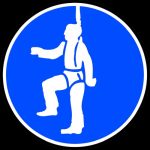 This blog is brought to you by FallProof Systems to educate our clients and colleagues on the fall risks associated with different workplaces and jobs.
This blog is brought to you by FallProof Systems to educate our clients and colleagues on the fall risks associated with different workplaces and jobs.
43% of workplace fall fatalities were in the construction industry. Injuries and illnesses from falls are considered preventable incidents that can be minimized or reduced with proper fall protection. Are you in compliance? Read more.
January 28, 2020, 3:28 pm | by Ray Nardo
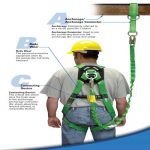 A simple question we get every day is….” Can you just give me some simple tips when my crew is working at heights?”
A simple question we get every day is….” Can you just give me some simple tips when my crew is working at heights?”
Well, yes, we can. First of all, falls are deadly! You must be prepared to protect your employees when working at heights. Working at heights refers to any work that is above ground in which a person could injure themselves if no precaution is taken. Fall protection is required when there is a fall greater than 6 feet within a 6 foot leading unprotected edge. Now that we have the simple prerequisites determined, here’s what to do: Read more.
November 25, 2019, 12:00 pm | by Ray Nardo
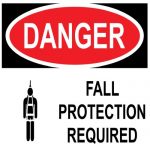 How many times have you gotten the question “When do I need to replace my harness”? The first thing you would do is look to ANSI Standards or OSHA Regulations for an answer. Coincidentally, they leave it up to the manufacturer to determine how long a harness or lanyard should be left in service. Read more.
How many times have you gotten the question “When do I need to replace my harness”? The first thing you would do is look to ANSI Standards or OSHA Regulations for an answer. Coincidentally, they leave it up to the manufacturer to determine how long a harness or lanyard should be left in service. Read more.
September 20, 2019, 2:28 pm | by Ray Nardo
 This blog will be a two-part discussion on Inspections of Fall Protection Systems. This month we will cover the OSHA (Occupational Safety and Health Administration) and ANSI (American National Standards Institute) standards and how to stay in compliance according to revised Walking-Working Surface Standard which OSHA made effective by January 17, 2017. The revised OSHA Walking-Working Surface Standard along with the ANSI standard define the responsibility of the employer and employee for inspecting Fall Protection Systems in the Construction Industry and General Industry. Read more.
This blog will be a two-part discussion on Inspections of Fall Protection Systems. This month we will cover the OSHA (Occupational Safety and Health Administration) and ANSI (American National Standards Institute) standards and how to stay in compliance according to revised Walking-Working Surface Standard which OSHA made effective by January 17, 2017. The revised OSHA Walking-Working Surface Standard along with the ANSI standard define the responsibility of the employer and employee for inspecting Fall Protection Systems in the Construction Industry and General Industry. Read more.
August 6, 2019, 3:30 pm | by Ray Nardo
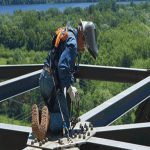 In this blog we will discuss leading edges and the new self-retracting lifeline issued for leading edges. What constitutes a leading edge, how the fall protection system and equipment is used as well as understanding OSHA and ANSI standards for leading edges can be difficult and confusing for employers and employees. Part of the confusion stems from the different definitions OSHA and ANSI have for leading edges as well as the PFAS used by the worker to protect them from the leading edge. Read more.
In this blog we will discuss leading edges and the new self-retracting lifeline issued for leading edges. What constitutes a leading edge, how the fall protection system and equipment is used as well as understanding OSHA and ANSI standards for leading edges can be difficult and confusing for employers and employees. Part of the confusion stems from the different definitions OSHA and ANSI have for leading edges as well as the PFAS used by the worker to protect them from the leading edge. Read more.
July 7, 2019, 11:49 am | by Ray Nardo
Fall Protection Basics
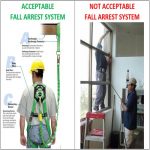 Working at heights can be challenging and difficult. The best way for workers to protect themselves is to remember the basics of fall protection systems. The basics consist of an understanding of the ABC’s of fall protection. The ABC’s of Fall Protection consist of (A) anchorage; (B)body wear, and (C) connectors and can be also known as a PFAS- personal fall arrest system. Although the basics can be boring and simplistic an understanding of them can save your life! Read more.
Working at heights can be challenging and difficult. The best way for workers to protect themselves is to remember the basics of fall protection systems. The basics consist of an understanding of the ABC’s of fall protection. The ABC’s of Fall Protection consist of (A) anchorage; (B)body wear, and (C) connectors and can be also known as a PFAS- personal fall arrest system. Although the basics can be boring and simplistic an understanding of them can save your life! Read more.
June 3, 2019, 10:49 pm | by Ray Nardo
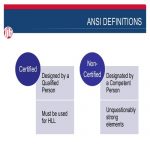 This blog will discuss the difference between Certified and Non-Certified Anchorage. The main differences between Certified and Non-Certified Anchorage are the different categories of anchorage, the design loads for these anchorages, and who is qualified to authorize the usage of the anchor. Anchorages fall under five unique categories: Fall Arrest; Work Positioning; Travel Restraint; Horizontal Lifeline-Rigid Track; and Rescue and ANSI Z359 provides distinct loading requirements for each. The following design loads- the maximum amount of something a system is designed to handle- specified in the ANSI Z359.2-2007. Read more.
This blog will discuss the difference between Certified and Non-Certified Anchorage. The main differences between Certified and Non-Certified Anchorage are the different categories of anchorage, the design loads for these anchorages, and who is qualified to authorize the usage of the anchor. Anchorages fall under five unique categories: Fall Arrest; Work Positioning; Travel Restraint; Horizontal Lifeline-Rigid Track; and Rescue and ANSI Z359 provides distinct loading requirements for each. The following design loads- the maximum amount of something a system is designed to handle- specified in the ANSI Z359.2-2007. Read more.
May 15, 2019, 10:54 pm | by Ray Nardo
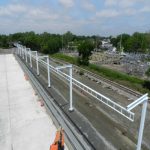 In this blog, we will discuss the 4th and last option on the hierarchy of fall protection. Fall Arrest Systems are last on the hierarchy of Fall Protection because the system and equipment are designed to arrest a fall. Basically, if a fall occurs the system will prevent/arrest the worker from falling to his death or a serious injury. Fall Arrest Systems are also known as Personal Fall Arrest Systems because each employee is equipped with the proper PPE-personal protective equipment combined with a system or anchorage designed to arrest a fall with an acceptable force and clearance margins. Read more.
In this blog, we will discuss the 4th and last option on the hierarchy of fall protection. Fall Arrest Systems are last on the hierarchy of Fall Protection because the system and equipment are designed to arrest a fall. Basically, if a fall occurs the system will prevent/arrest the worker from falling to his death or a serious injury. Fall Arrest Systems are also known as Personal Fall Arrest Systems because each employee is equipped with the proper PPE-personal protective equipment combined with a system or anchorage designed to arrest a fall with an acceptable force and clearance margins. Read more.
April 7, 2019, 8:58 am | by Ray Nardo
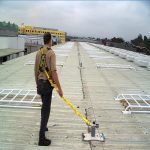 In this blog we will continue to discuss the hierarchy of fall protection and another way for employers to protect their workers. As previously noted, each fall risk situation should be analyzed on a case by case basis so it is important to understand the work being performed, access to the work area, and the frequency of the work. Here, we will discuss the 3rd solution on the hierarchy of fall protection pyramid- Fall Restraint Systems also known as Travel Restraint Systems. Sometimes, Passive Fall Protection Systems- like guardrail- which was discussed in last month’s blog- is not an option and is why an employer moves to the next option on the hierarchy- a Fall Restraint System. Read more.
In this blog we will continue to discuss the hierarchy of fall protection and another way for employers to protect their workers. As previously noted, each fall risk situation should be analyzed on a case by case basis so it is important to understand the work being performed, access to the work area, and the frequency of the work. Here, we will discuss the 3rd solution on the hierarchy of fall protection pyramid- Fall Restraint Systems also known as Travel Restraint Systems. Sometimes, Passive Fall Protection Systems- like guardrail- which was discussed in last month’s blog- is not an option and is why an employer moves to the next option on the hierarchy- a Fall Restraint System. Read more.
February 28, 2019, 10:02 pm | by Ray Nardo
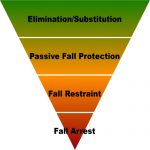 As discussed in last month’s blog understanding the hierarchy of fall protection will help an employer and employees who are working at heights make their work environment as safe as possible. In this blog we will talk a little more about Fall Prevention Systems which is second on the hierarchy of fall protection. Fall Prevention Systems are second on the hierarchy because the first solution– Elimination- preventing access or removing the hazards is always the safest and best first solution. For instance, removing an air handler from the roof to the ground or replacing a ladder with a stairway are ways to eliminate the fall hazard. Ideally, the safest option to ensure worker safety is to completely eliminate the fall hazard. However, if this not possible a Fall Prevention System can be installed to create a barrier which is another way of eliminating the hazard. Read more.
As discussed in last month’s blog understanding the hierarchy of fall protection will help an employer and employees who are working at heights make their work environment as safe as possible. In this blog we will talk a little more about Fall Prevention Systems which is second on the hierarchy of fall protection. Fall Prevention Systems are second on the hierarchy because the first solution– Elimination- preventing access or removing the hazards is always the safest and best first solution. For instance, removing an air handler from the roof to the ground or replacing a ladder with a stairway are ways to eliminate the fall hazard. Ideally, the safest option to ensure worker safety is to completely eliminate the fall hazard. However, if this not possible a Fall Prevention System can be installed to create a barrier which is another way of eliminating the hazard. Read more.
 This blog is brought to you by FallProof Systems to educate our clients and colleagues on the fall risks associated with different workplaces and jobs.
This blog is brought to you by FallProof Systems to educate our clients and colleagues on the fall risks associated with different workplaces and jobs.









